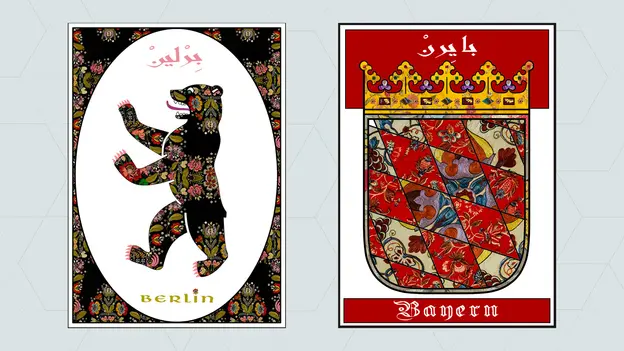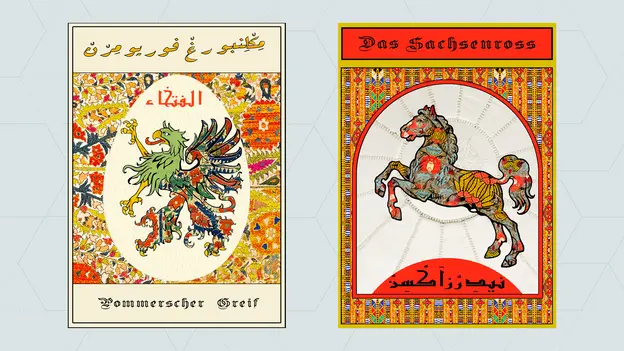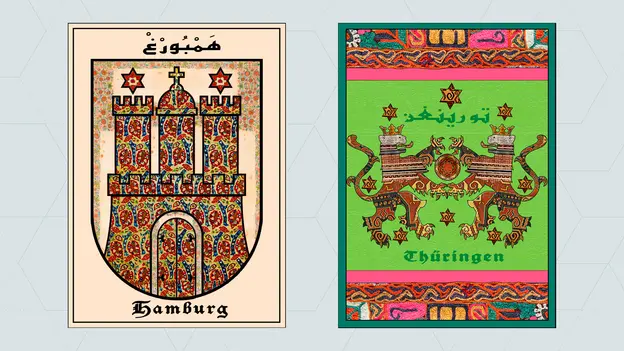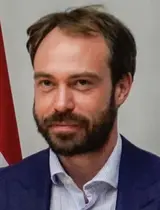Tandem Project
Uncover the Creative Potential of Intercultural Encounters
Publication
Whereas academic and wider public debates tend to frame migration in terms of crises, the Tunis Encounters project explored the creative potential of intercultural encounters resulting from migration, a potential that is too often overlooked. The Tunis Encounters produced such encounters in a nutshell, by bringing together artists, authors, designers and researchers from the Middle East, North Africa and Europe, and invited them to collaborate across national and linguistic boundaries.
An international collaboration of 15 artists, researchers, and designers
A majority of the participants have migrated themselves and are, or were previously, living in exile, are from families of migrants, or living in places different from the countries in which they were born. Some of them addressed topics related to migration and exile in their work, others do not. Some of them were only able to express themselves freely in exile, others could express themselves in their home countries, too. However, neither a biography of migration nor the exclusive treatment of migration topics were a condition for the participation in the project. The idea of the project was to induce intercultural encounters that otherwise may only take place as a consequence of transnational migration.
As the category of the “migrant” often rests on the distinction between insider and outsider, or a boundary between “us” and “them”, and reduces complex biographies and identities to the crossing of this boundary, the Tunis Encounters project avoided any limitation of topics or forms of expression. Instead of reducing im/migrant art and literature to topics related solely to migration, it focused on intercultural encounters, aiming to facilitate dialogue and collaborations, as well as to reflect upon ways of crossing and expanding the boundaries of aesthetic traditions.
Tunis Encounters uniquely allowed us to form a landscape of translations between languages, places, perceptions and art genres. It proved once more that cooperation is fundamental to creativity, not despite but because of difference.
Anna Hetzer, Tunis Encounters author
New Designs for Bilingual Scripts
Considering artistic and literary forms of expression as alternative, but equally valuable, forms of knowledge creation as academic research, the Tunis Encounters project aimed to publish first-hand material produced in the framework of a workshop in 2020 through bilingual illustrated booklets, exhibitions and readings. New solutions for bilingual scripts, developed in the framework of the project allow for engagement with the content and the language of the “other”. Thus operating on the intersection of art, literature, graphic design and research, the project breaks new grounds for innovative ways of transferring knowledge to international audiences. Find the link to the publishing house here.
The original project idea was to meet in Tunis for a workshop in spring 2020, in order to allow the participants to get to know each other, through presentations of their previous works and collaborative creative exercises. When the global pandemic made travelling and gatherings of groups impossible, the AGYA members Dr. Stefan Maneval and Dr. Anis Ben Amor decided to meet online, exploring alternative forms of communication and collaboration. For this purpose, texts by the participating authors were translated from Arabic to English and German, and from German and English to Arabic. Regular online meetings in larger and smaller groups were held to exchange thoughts and ideas, as well as texts and images, and this process is still ongoing.
- Disciplines Involved
- Literature, Art History, Musicology, Middle Eastern Studies, Arabic & Islamic Studies
- Project Title
- Tunis Encounters: Migration in Aesthetics and Literature (Part IV)
- Year
- 2021
- Funding Scheme
- Tandem Project
- Countries Involved
- Germany, Lebanon, Tunisia, Italy, Sweden




